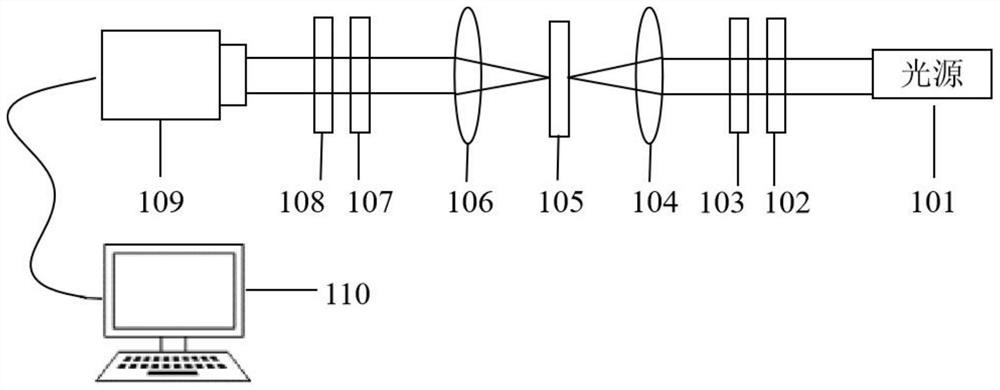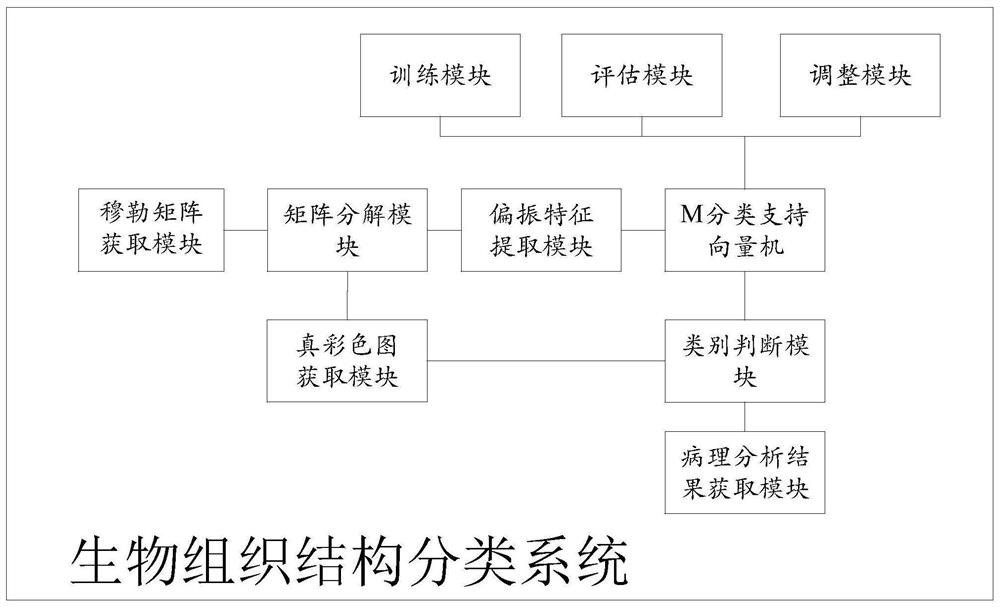Mueller polarization technology-based biological tissue structure classification system
A technology of biological tissue and classification system, applied in the direction of polarization influence characteristics, pathological reference, instruments, etc., can solve the problems of large influence of random factors, inability, and insufficient structural information, etc., to reduce the influence of random factors and qualitative analysis Precise, the effect of improving the accuracy rate
- Summary
- Abstract
- Description
- Claims
- Application Information
AI Technical Summary
Problems solved by technology
Method used
Image
Examples
Embodiment 1
[0061] Such as figure 2 As shown, the present invention provides a biological tissue structure classification system based on Mueller polarization technology, which is used for high-contrast display of polarization characteristics and high-accuracy classification evaluation of biological tissue samples, including a Mueller matrix acquisition module and a matrix decomposition module , Polarization feature extraction module, M classification support vector machine, true color map acquisition module, category judgment module, pathological analysis result acquisition module, wherein M is at least 2;
[0062] The Mueller matrix acquisition module is used to acquire the Mueller matrix of the biological tissue to be classified according to the Mueller polarization imaging technique. For example, the biological tissue is skin tissue, and the types of skin tissue are malignant lesion tissue (melanoma skin tissue), benign lesion tissue (pigmented nevus skin tissue), and normal skin tis...
Embodiment 2
[0117] Based on the above embodiments, this embodiment provides a subsystem for training M classification support vector machines, the subsystem includes a training module for training M classification support vector machines, a support vector machine evaluation module and a support vector machine adjustment module , wherein, the training module includes a data set acquisition unit, a matrix decomposition unit, a polarization feature extraction unit, a support vector machine acquisition unit, and a support vector machine verification unit; the support vector machine evaluation module includes a data set acquisition subunit, a matrix decomposition Subunit, polarization feature extraction subunit, support vector machine testing subunit. At the same time, the workflow of this subsystem is as follows: Figure 4 As shown, the specific functions of each module are limited as follows:
[0118]The data set acquisition unit is used to acquire M categories of biological tissue samples ...
PUM
 Login to View More
Login to View More Abstract
Description
Claims
Application Information
 Login to View More
Login to View More - R&D
- Intellectual Property
- Life Sciences
- Materials
- Tech Scout
- Unparalleled Data Quality
- Higher Quality Content
- 60% Fewer Hallucinations
Browse by: Latest US Patents, China's latest patents, Technical Efficacy Thesaurus, Application Domain, Technology Topic, Popular Technical Reports.
© 2025 PatSnap. All rights reserved.Legal|Privacy policy|Modern Slavery Act Transparency Statement|Sitemap|About US| Contact US: help@patsnap.com



